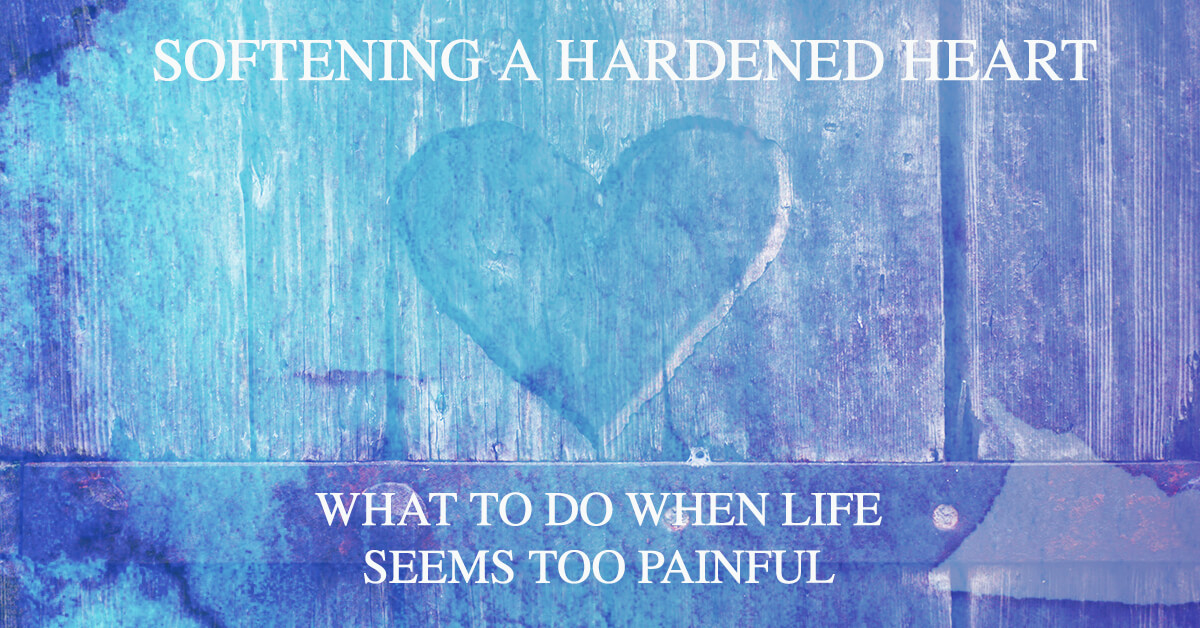When we see a homeless person on the street, a child dirty and neglected, animals abandoned and starving or people suffering great loss from natural disasters, something happens inside that either opens us up or shuts us down.
Connecting to their pain and suffering can scare us, scar us, and stay with us. So many of us run the other way. Ok, maybe we don’t actually run, but have you ever shut down, or blocked it out, or looked the other way, or just ignored it or them? If you have and you have felt guilty about it, there is something you can do about it.
It’s a Protection Mechanism
As a former TV News Anchor and Reporter, I created a space or compartment in which I tucked away all the sadness and pain I reported on the news each day.
This allowed me to do my job without breaking down on the air as I read some of the most horrific stories. It also allowed me to live my life without carrying the woes of the world home to my husband and son. It also took its toll as I felt like my heart had a hard calloused shell around it. And what I found was the more I didn’t allow the pain, the less I was able to experience joy.
Both exist in this world, but because I wasn’t willing to experience pain, I had a difficult time enjoying pleasure.
This is not unusual in the news business or the medical profession, or with many first responders.
But now, I think much of the world is doing the same thing.
With the constant barrage of 24 hour news on television and at our fingertips online, plus with all the sadness, anger and rage we see on social media, we are all exposed to pain and suffering so much so, that many of us have also either tucked it away or have become immune to it.
As a result, many of us have created calluses around our hearts.
When my son Brandon was hanging on for life, I remember going to the waiting room in the neonatal intensive care unit and learning about the shootings at Columbine. The overwhelming sadness that other parents were suffering from having their children shot and killed in the classroom, as I was experiencing my own son fighting to live was overwhelmingly painful for me and suddenly that protective mechanism that had worked so well for me for so long, broke.
I was no longer able to separate their pain from mine.
And with each new tragic news story it became more and more difficult for me to be able to continue working in that industry. And I eventually retired.
But I was able to work my way back to becoming hope filled, compassionate and loving toward myself and others.

Fast forward to today and I have noticed that callous has hardened again.
So much so that I have noticed that it is truly affecting me in the way I have been able to show loving kindness and compassion to myself and perhaps to others.
Having lived through a pandemic, grieving so many people I loved, including my dad, my dog and my best friend, working with so many grieving clients, plus feeling the collective grief of the world,
I have found that this protective mechanism has come back with a vengeance.
While I am not afraid of facing pain and suffering, I guess I have grown weary from facing so much of it. And I am sure I am not alone.
Many experts refer to this as compassion fatigue.
And I know I am not alone.
But I have noticed that the more I run away from it, try to avoid it, or ignore it, as a way of protecting my heart, it is actually shutting it closed.
Sometimes I swear I feel more like an emotionless zombie instead of an “inspirationista” who works daily to encourage and uplift others.
. And because of that, I have been looking to find ways to figure out what is going on, and ways to re-open and soften my heart.
I know your story isn’t mine, but if you have noticed that, you too, have become more hardened to the suffering of of the world or even the pain and suffering of others you love and care about, and you want it t change, keep reading because I am going to share a way that can help you feel better right away.
Recognizing it is a Great First Step.
But recognition is only a part of the equation.
What can you do to change it?
Here is what I have tried so far: prayer, meditation, journaling, counseling, and reiki. I have even enrolled in a Happiness Management course. But then at my last counseling session, my therapist suggested I read a book called “When Things Fall Apart” by Pema Chodron.
And inside that book is a wonderful meditation that is truly helping me regain my compassion and is helping me to open up my heart. And the way that it is happening is by walking toward the pain and suffering instead of trying to shield yourself from it.

Walk Toward the Pain
When there is a fire, or shooting, or any other threatening situation, our natural instinct is to run away from it and run to safety.
However, first responders, medical personnel, and many reporters, run toward the threatening situation. And because they do, many people are saved or rescued.
And much of the same thing happens through a Buddest meditation practice called Tonglen.
The entire premise of this simple meditation is to breathe in the pain of someone specific or others who may be suffering, and breathe out healing, relief, compassion towards that person and anyone else suffering.
Breathe in the pain of the world
Breathe out healing the pain of the world
While in the practice of Tonglen we might realize we are the one who is stuck in our own pain and misery. Chodron says Tonglen will help you get unstuck.
If we are able to name our pain, be it grief, anger, terror, we breathe it in for not just yourself but all the people who are caught with that same emotion.
And we send out relief for ourselves and others.
Chodron says Tonglen can be done for anyone who is ill, dying or has died. It can be done for those who are in pain of any kind.
It can be done right on the spot or in a meditation practice.
Tonglen reverses the trend we have toward avoiding suffering and seeking pleasure, and as a result, we discover the walls of protection we have built up around our heart start to slowly dissolve. This allows us to actually feel more love for ourselves and for others.
We actually begin to feel better by breathing in pain!
I know this might sound a bit counterintuitive, but there is such a deep truth to this practice that I had to experience it for myself.
And when I actually tried it, I immediately felt it working.
When Someone’s Pain Feels Too Painful for You to Bear
There has been a grieving family that has been on my heart for quite some time and their pain is so overwhelming to them that it seems incapacitating.
I spent some time thinking of each of them and breathing in their pain and suffering as I inhaled. Then I exhaled, love, peace, relief and healing.
After doing this over and over, I found my eyes filling with tears as I leaned into their pain, but also felt such a warmth and flow of love as I exhaled.
I could feel my heart start to soften by feeling someone else’s pain.
Because I could feel a difference from trying this just one time I knew I had to share this with as many people as possible.
Tonglen is an amazing practice to help you get unstuck, reconnect to compassion and love for others, and yourself.
So the next time you come in contact with a person in pain or a situation that seems particularly painful or hopeless, instead of being afraid and avoiding it, Chodron invites us to breathe in that pain for all of us and breathe out relief for all of us, thus using what seems like poison as medicine.
And she says, the more you practice it, the more able you will be able to be there for others even in what used to seem like impossible situations.
If you would like to learn about incorporating Tonglen as a formal medication practice, I suggest picking up a copy of “When Things Fall Apart”.

